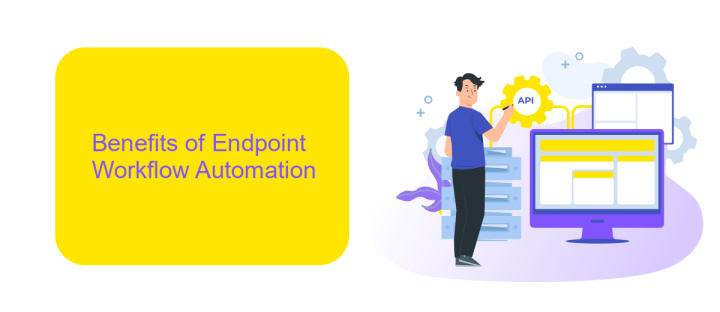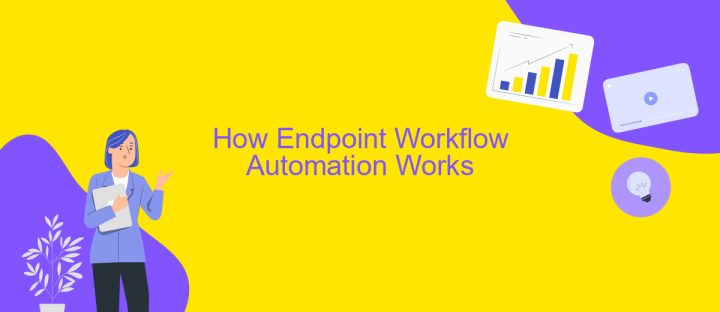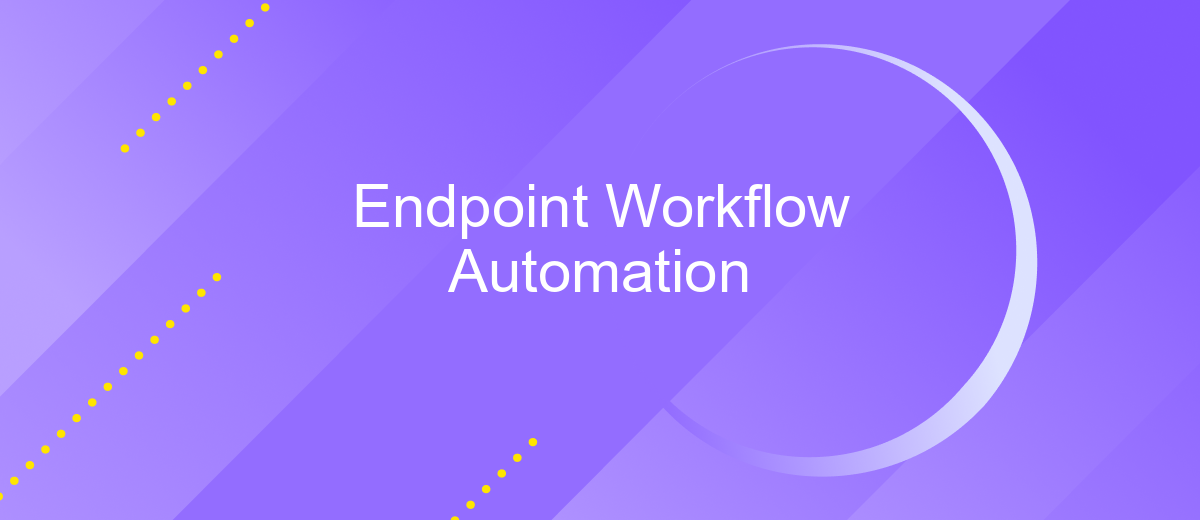Endpoint Workflow Automation
In today's fast-paced digital landscape, Endpoint Workflow Automation has emerged as a crucial tool for enhancing operational efficiency and security. By automating routine tasks and streamlining complex processes, organizations can reduce human error, save time, and focus on strategic initiatives. This article delves into the key benefits, implementation strategies, and future trends of endpoint workflow automation, offering insights for businesses of all sizes.
Introduction to Endpoint Workflow Automation
Endpoint Workflow Automation is a crucial aspect of modern IT infrastructure, enabling organizations to streamline and optimize their processes. By automating repetitive tasks and workflows, businesses can achieve higher efficiency, reduce human error, and ensure consistency across various operations. This technology is particularly beneficial for IT departments that need to manage a large number of endpoints, such as computers, mobile devices, and servers.
- Improved efficiency through task automation
- Reduced human error and increased consistency
- Enhanced scalability for growing businesses
- Better resource allocation and utilization
One of the key components in endpoint workflow automation is the integration of various services and applications. Tools like ApiX-Drive facilitate seamless integration, allowing businesses to connect different systems and automate data transfers effortlessly. By leveraging such services, organizations can create a more cohesive and automated IT environment, ultimately driving productivity and innovation.
Benefits of Endpoint Workflow Automation

Endpoint Workflow Automation offers numerous benefits, significantly enhancing operational efficiency and productivity. By automating repetitive tasks, organizations can reduce the risk of human error, ensuring more consistent and reliable outcomes. This automation frees up valuable time for employees, allowing them to focus on more strategic and creative tasks that drive business growth. Additionally, it enables faster response times and improved service delivery, which can lead to higher customer satisfaction and retention rates.
Furthermore, integrating various systems and applications through services like ApiX-Drive simplifies the process of data synchronization and workflow management. ApiX-Drive allows seamless connections between different platforms, ensuring that data flows smoothly and accurately across the organization. This integration capability not only streamlines operations but also provides real-time insights and analytics, empowering businesses to make informed decisions quickly. Overall, Endpoint Workflow Automation, supported by robust integration tools, is a key driver for operational excellence and competitive advantage.
How Endpoint Workflow Automation Works

Endpoint Workflow Automation simplifies complex processes by automating repetitive tasks and ensuring seamless integration between different systems. It streamlines workflows, reduces human error, and enhances productivity by allowing endpoints to communicate and execute tasks autonomously.
- Identify the tasks that need automation within your workflow.
- Choose an automation tool, such as ApiX-Drive, that supports endpoint integration.
- Configure the endpoints and set up the necessary triggers and actions.
- Test the automated workflow to ensure it functions correctly.
- Monitor and optimize the workflow for continuous improvement.
Using a service like ApiX-Drive can significantly simplify the process of setting up endpoint integrations. It offers a user-friendly interface and a wide range of supported applications, making it easier to connect different systems and automate workflows without extensive coding knowledge. By leveraging such tools, organizations can achieve higher efficiency and focus on more strategic tasks.
Challenges and Best Practices of Endpoint Workflow Automation

Implementing endpoint workflow automation can be fraught with challenges, including integration complexities, security concerns, and the need for continuous monitoring. Organizations often struggle to seamlessly connect disparate systems and ensure that data flows smoothly between them.
Security is another significant challenge. Automating workflows can expose endpoints to potential vulnerabilities, making it essential to implement robust security measures. Additionally, monitoring and maintaining automated workflows require dedicated resources and expertise.
- Integration Complexity: Use tools like ApiX-Drive to simplify the integration of various systems.
- Security Measures: Implement multi-layered security protocols to protect endpoints.
- Continuous Monitoring: Allocate resources for ongoing monitoring and maintenance of automated workflows.
By addressing these challenges with best practices, organizations can maximize the benefits of endpoint workflow automation. Leveraging tools such as ApiX-Drive can streamline integrations, while robust security measures and continuous monitoring ensure reliable and secure automation processes.
- Automate the work of an online store or landing
- Empower through integration
- Don't spend money on programmers and integrators
- Save time by automating routine tasks
Conclusion
Endpoint Workflow Automation represents a significant advancement in optimizing business processes, reducing manual intervention, and ensuring seamless integration between various systems. By automating repetitive tasks and streamlining workflows, organizations can achieve higher efficiency, improved accuracy, and faster response times. This transformation is vital for staying competitive in today's fast-paced digital landscape.
To fully leverage the benefits of Endpoint Workflow Automation, integrating with robust platforms like ApiX-Drive can be instrumental. ApiX-Drive facilitates the seamless connection between diverse applications, enabling businesses to automate data transfers and synchronize operations effortlessly. By incorporating such integrations, companies can enhance their workflow automation strategies, ensuring that all endpoints communicate effectively and operate in harmony. This ultimately leads to more cohesive and efficient business operations, driving growth and innovation.
FAQ
What is Endpoint Workflow Automation?
How can Endpoint Workflow Automation benefit my business?
What types of tasks can be automated using Endpoint Workflow Automation?
How do I implement Endpoint Workflow Automation in my organization?
Is Endpoint Workflow Automation secure?
Routine tasks take a lot of time from employees? Do they burn out, do not have enough working day for the main duties and important things? Do you understand that the only way out of this situation in modern realities is automation? Try Apix-Drive for free and make sure that the online connector in 5 minutes of setting up integration will remove a significant part of the routine from your life and free up time for you and your employees.


